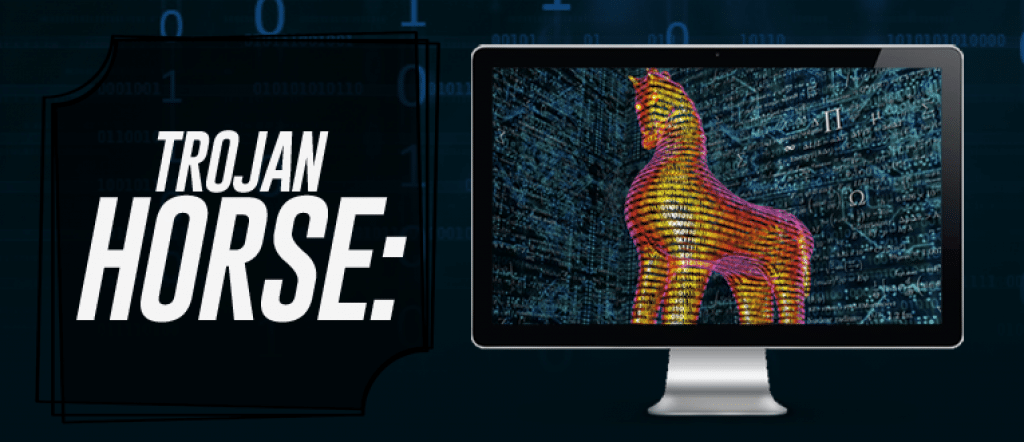What is a Trojan Horse?
A Trojan Horse is a form of malware – a malicious file used to infect computers.
It’s designed to be hidden within a legitimate looking file to trick you into clicking and installing it.
The name “Trojan Horse” was taken from the legend of the Greeks hiding in a large, hollow horse in order to sneak into Troy and won the Trojan War by surprise.
In modern terms, Trojan files often appear to be inside a music file, a popular game, an advertisement, a smartphone app, or anything else that you might want to click on.
When you open the file, the Trojan will perform some sort of action the hacker chooses.
Because Trojans are so cleverly hidden and hard to detect, they’re growing in popularity amongst cyber thieves.
Cyber-criminals use them to spy on or steal your computer’s information.
Trojans are not the same as a virus, but do have the ability to spread from your computer to others.
How do Trojan Horses work?
Once implanted into your computer, Trojans can create a secret way for hackers to have control over your computer.
A Trojan Horse can enable these cyber-thieves to steal your important data, spy on you, and get access to your computer.
Perhaps one of the most well known Trojans was called “Melissa,” and its spread forced Microsoft to actually shut down email servers temporarily.
The program stole contact information from its victims and would send itself to dozens of contacts listed in each victim’s computer.
Other damaging Trojan Horses in recent history include “My Doom,” which was able to freeze Google, and “Sasser,” which forced computer users to unplug their machines.
Others: “Storm Trojan,” which would send users emails such as “230 dead as storm batters Europe,” or “FBI vs Facebook” before infected thousands of machines as a network.
Types of Trojan Horses
Some of the worst Trojans in recent history have infected the computers of millions of people.
Backdoor Trojans provide cyber-criminals with the ability to control your computer.
Hackers can send or receive files, see your data or even reset your computer without your knowledge.
Trojan Bankers help criminals steal your bank account information, including details about your credit card or debit card.
“Droppers” help keep malicious programs from being detected.
These files are often immune from antivirus programs, and therefore difficult to detect.
Trojans can also appear as anti-virus software.
These are known as “FakeAV,” and are disguised as programs that promise to find and remove threats on your computer.
In reality, these files are another way for hackers to take your money.
Other Trojans target online gamers, or steal your username and passwords for computer programs.
Some cyber-criminals use Trojans to blackmail you into paying money in order to save your computer.
Other Trojans may access the email addresses on your computer or keep a record of the programs you use or the words you type on a keyboard.
How to remove Trojan Horses
Because each Trojan is different, getting them off of your computer or other electronic device might take a variety of steps.
If you’re paying for an antivirus or anti-malware program, the company may be able to help you detect and remove it.
A reputable computer repair service, trusted anti-virus company, or the maker of your device may also be able to assist.
Always verify the legitimacy of a company or program before paying to have a Trojan removed.
If you want to do it yourself, here is a step-by-step guide to get rid of Trojan Horses.
Ways to prevent Trojan Horses
Be careful what you click on. Even though that email in your inbox looks to be from someone you know, it could easily be a dangerous file disguised as something or someone you know.
If you aren’t absolutely certain it’s safe, don’t click!
Stay away from programs or websites that offer pirated or “free” content that you would otherwise have to pay for.
Also, consider installing a legitimate anti-virus or anti-Trojan software to help with early detection of malicious files.[/vc_column_text][/vc_column][/vc_row]

